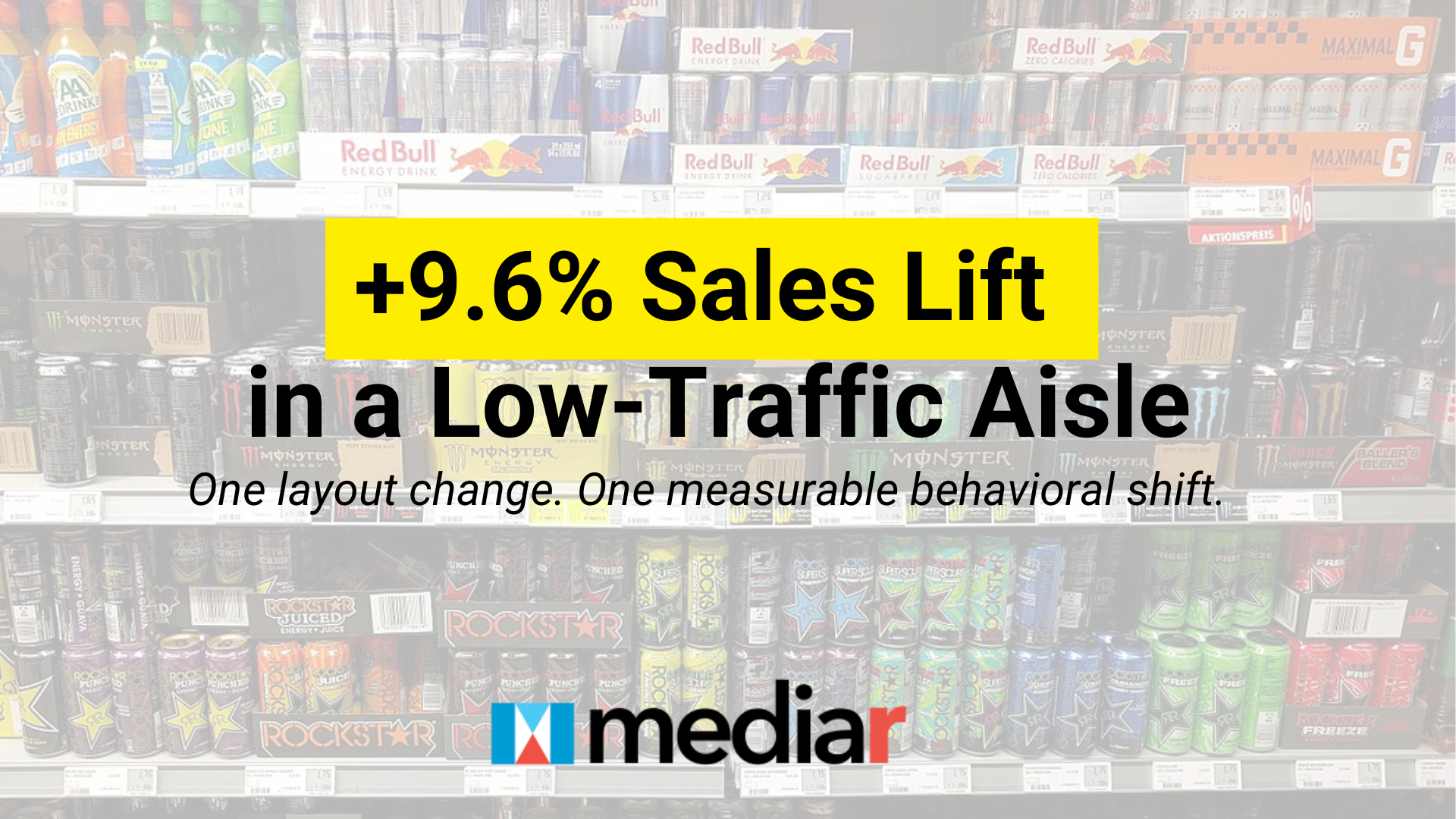
Energizing the Aisles: How Strategic Design Turned a “Cold Zone” Into a Growth Driver
The energy drink aisle had gone quiet. Despite strong category growth elsewhere, one global beverage leader saw little movement in-store: limited visibility, low engagement, and shoppers passing by without stopping. To change that, the brand introduced the Energy Zone (EZ), a bold, dedicated section designed to make the category stand out and re-ignite shopper interest.
Launched across select retail locations in 2024, the pilot aimed to test whether better in-store design could translate into measurable behavioral and sales impact. Over a two-month period, Mediar tracked performance using year-over-year and control-store comparisons to see how this one change could reshape the aisle experience.
How the Test Worked
The team focused on three key questions:
- Did the store perform better overall? The EZ test store was compared against its own 2023 baseline and a similar, non-EZ control store in 2024.
- Did shoppers actually behave differently? Using Mediar’s computer-vision analytics, shopper flow, stop rate, and dwell time were tracked to see how the EZ influenced engagement, especially in what was once a “cold” zone.
- Did buying patterns shift? SKU-level sales, format preference (e.g., cans, light variants), and basket composition were analyzed to capture not just more sales, but smarter sales.
What We Saw
More Engagement in a Low-Traffic Area Shoppers didn’t just walk by, they stopped. The EZ dramatically increased both stopping power and dwell time, outperforming the store’s 2023 baseline and a same-format control store.
Conversion Lift The redesigned space encouraged trial and trade-ups, driving higher category conversion, particularly among canned SKUs. Some brands gained share while others declined, suggesting that placement alone was reshaping shopper preference.
Sales Growth Between September and November 2024, the test store consistently outperformed its prior-year sales, with the overall category showing clear growth. The leading brand achieved a +9.6% increase in value sales, while two other key competitors posted modest but positive gains of +0.8% and +0.5%, respectively—demonstrating that the Energy Zone concept drove incremental category uplift, not just brand-level shifts.
Basket Expansion The EZ also grew the total category footprint inside the basket. Shoppers added more energy drink units per trip and were more likely to include complementary items like fruit, beef, chocolate, and soda. A small dip in average ticket for the top brand hinted at greater promo participation or shifts toward smaller formats, still a positive signal of accessibility and reach.
Why It Matters
The Energy Zone pilot proved that design can drive data. A strategic layout change didn’t just look better, it changed how people shopped. Engagement rose. Conversion improved. Category sales climbed nearly 10% in a low-traffic aisle.
For retailers and brands alike, the takeaway is clear: when you reimagine the shopper journey, even small physical shifts can create big behavioral and commercial impact.








